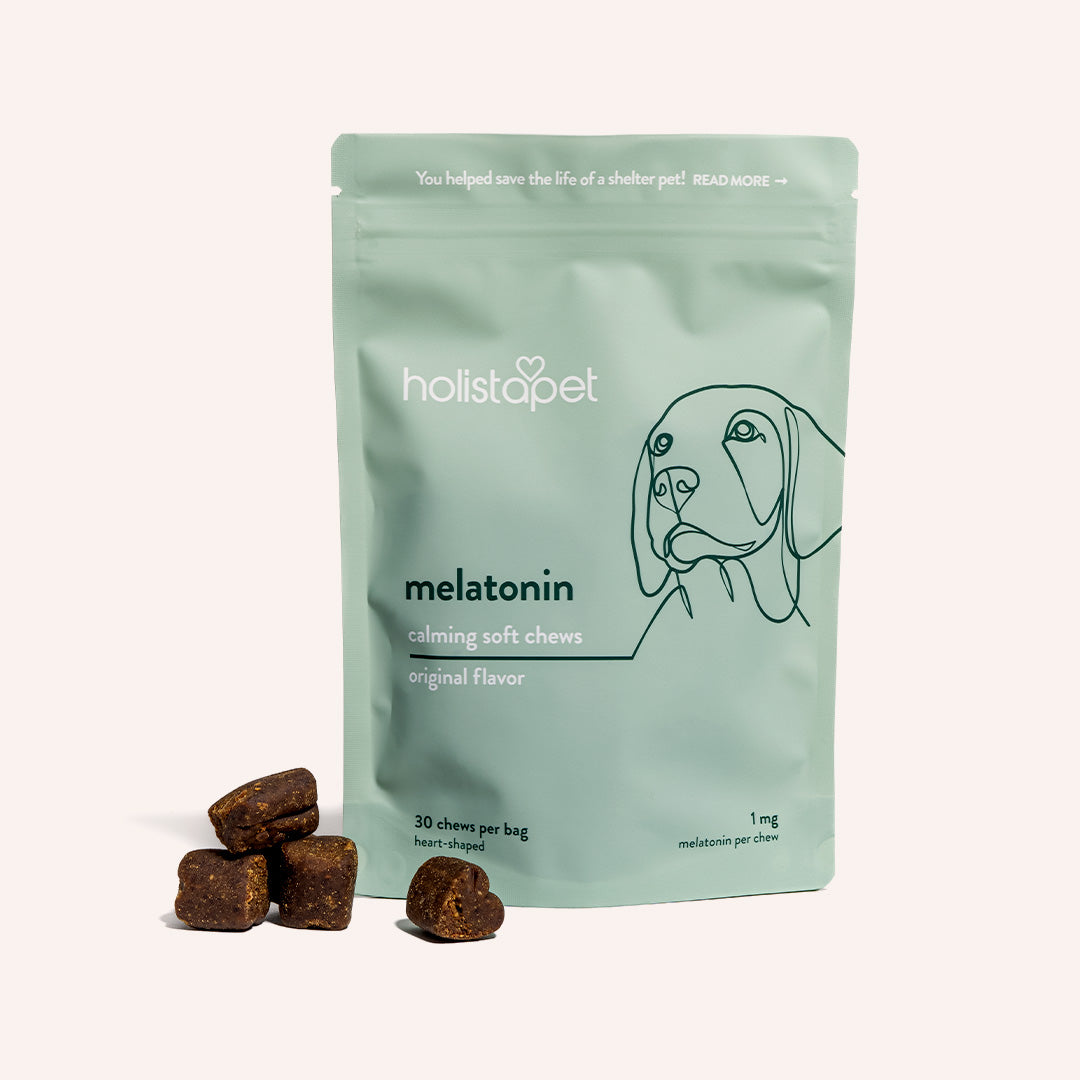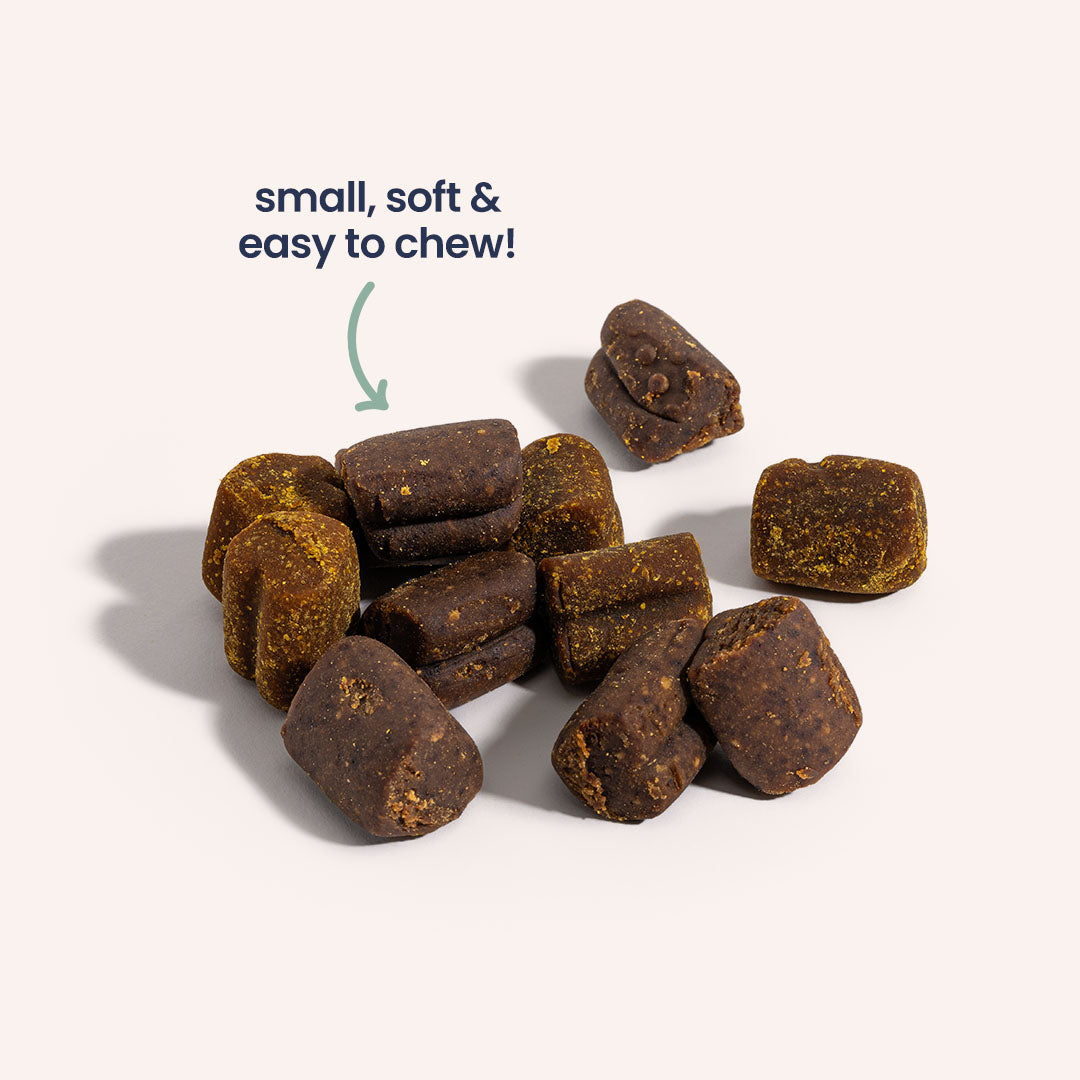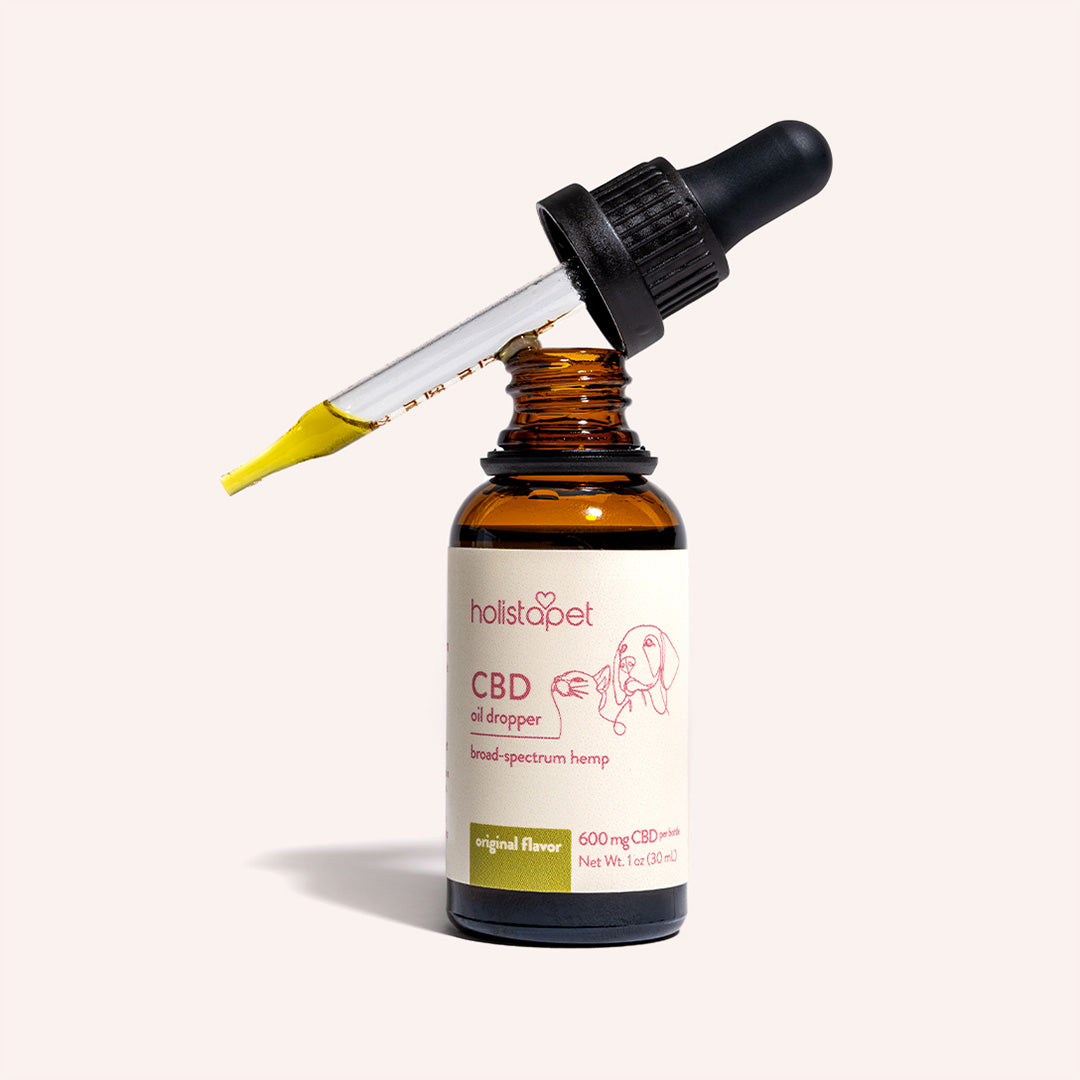If you're searching up remedies for dog dermatitis, you probably have one uncomfortable pup on your hands! Good thing you're here, because we have some info that can help you and your pup. Dog dermatitis is a condition that refers to any unusual swelling of the skin. Many questions are how to get rid of dog dermatitis and how does this happen?
Well, it can be hard to say because dermatitis can be caused by several different conditions, like allergies or eczema, itch. It’s essential to bring your dog to a veterinarian for the most accurate diagnosis and treatment, but you can try aloe vera to soothe your furry friend's symptoms itch in the meantime. Let's explore what causes dermatitis and how you can fix it!
Dog Dermatitis: Symptoms & Causes
Dermatitis, or skin swelling, is the body’s natural immune response to bacteria and viruses it perceives to be a threat. Signs of inflammation include heat, redness, pain, and swelling. When the swelling is appropriate, it is a healthy defense mechanism that keeps the body safe and can we treat dog dermatitis at home?. However, when the swelling becomes exaggerated or inappropriate, it can spell trouble for your dog.
Here's a closer look at what causes excessive swelling responses:
Allergies
Allergies are a type of overreaction by the immune system to substances called “allergens.” Various genetic factors may make your dog’s more sensitive to these allergens. Allergies can show up in different places in a dog, including in the respiratory tract, gastrointestinal tract, and skin. In most cases, allergens from the outside environment find their way onto dog's skin, causing inflammation.
Once exposed, the body identifies the allergens as invaders that must be destroyed. This triggers a massive swelling response and dermatitis forms on your dog’s skin. Your dog then obsessively scratches and bites at the affected areas. This behavior then creates a hot spot and may even cause an open wound that may become infected with itch.
Eczema
There are two types of eczema: dry and wet. Dry eczema looks like flaky, dry, irritated patches on your dog. Wet eczema (also called a"hot spot") is a moist, oozing lesion that can give off a foul smell. Both types will annoy your dog more than a colony of fleas! To relieve itch and inflammation, it's important to understand how to treat dog dermatitis at home.
Eczema can develop for a number of reasons. Bacterial infections, parasites, and allergies can all lead to eczema. It's essential to investigate your dog's environment to see what might be causing their allergy.
Most Common Allergens That Cause Allergic Dermatitis In Dogs
Allergic dermatitis in dogs is most frequently caused by airborne allergens. This means that the substances causing the reaction float around in the air. Interestingly, these allergens can also cause allergy reactions in humans. In this sense, we share some of our medical problems with our pets. However, in people, airborne allergens most often cause signs of hay fever (itchy eyes, runny nose, sneezing, coughing), whereas they more often cause skin swelling (dermatitis) in the dog.
The three most common types of airborne allergens that cause dermatitis in dogs are:
Dust Mites:
These are microscopic insect-like pests that are most often found in house dust. They subsist on flakes of dead skin (also known as dandruff) that people and their pets shed every day. Dust mites are not parasites, and they don’t bite or sting people or dogs. However, they cause problems by triggering an allergic itch response.
Pollens:
This is a powder-like substance that is made up of microscopic grains that come from flowers or plants.
Molds:
This is a type of fungus that is frequently found in dark and damp areas. The microscopic spores that it releases into the air act as allergens. There are different types of molds that exist naturally in the environment.
Common Signs Of Dog Allergic Dermatitis
Allergic dermatitis can be incredibly uncomfortable for your dog. The condition may range from mild to severe and, if left untreated, can eventually become debilitating. Any dog can develop allergic dermatitis, but breeds that are most commonly affected are Boxers, Bulldogs, Retrievers, and German Shepherds, and Shih Tzus. Itch
Common signs of allergic dermatitis in dogs are:
- Excessive scratching, chewing, biting, or licking
- Hair loss
- Flaky and/or greasy skin with a foul odor
- Excessive chewing on the paws, groin, and/or armpits
- Raw and swollen areas of the skin known as hot spots
- Secondary yeast or bacterial skin problems
- Complications around the ear
- Runny nose and/or eyes (less common)
Common Areas Affected By Dog Dermatitis
- Ears
- Muzzle
- Ankles
- Underarms
- Paws and in between toes
- Groin
- On the face and around the eyes
- Around the anus
*Dog allergic dermatitis can flare up on any area of the body but most commonly affects the above areas.
Treatment Steps: Clean, Heal, & Prevent
Unfortunately, allergic dermatitis can get progressively worse if left alone. Because of the extreme itchiness of the condition, your dog will likely scratch and chew its skin until it becomes raw and infected. These raw and swollen areas then trigger even more itchiness infection and discomfort, creating an ongoing cycle of itching and swelling.
Common Ways Of Treating Dog Allergic Dermatitis
- Prescription medications can help treat the swelling. These are often necessary if the problem is moderate to severe.
- Allergy shots or sublingual drops. Your veterinarian can perform tests to determine what environmental allergens are causing a problem. Providing sublingual (under the tongue) drops can specifically target those allergies and treat the itch and swelling in a safe and holistic way.
- Anti-itch shampoos. These can relieve the itchiness in the short term.
- Fatty acid therapy. Like anti-histamines, these can treat the swelling and itch and mainly help if the signs are mild.
Cleaning Regimen For Dermatitis
It is also essential that you keep your dog’s skin clean and dry. once weekly or more often!) helps to remove itch allergens. However, after bathing, it is important that the skin stays dry. This is particularly true if your dog has open wounds or sores. If your dog cannot stop scratching or biting itself due to itch, then you may want to place a cone on its neck for its own protection.
Because dermatitis can result from allergic reactions to the environment, keeping a clean house is also essential. Do not allow excessive dust buildup. This will help control the number of dust mites and itch. Having an air purifier can also help filter out airborne allergens. If you also suffer from allergies, then these steps can help treat your condition as well.
In addition, have your home checked for mold regularly. If you discover mold, you will have to either cut it out yourself or call a removal service. If pollen is the primary irritant for your dog's dermatitis, you may have to keep them from rolling around in the grass or jumping into bushes. This will limit the amount of pollen that touches their skin and help reduce itch.
Is Skin Atrophy In Dogs The Same As Dermatitis?
Skin atrophy occurs when dermal thickness reduces. In plain language, this means the skin begins to thin. While this is not exactly the same thing as dermatitis, skin atrophy can occur alongside dermatitis. Inflammation? Well, if your vet prescribed topical steroids to treat your furry friend's condition, overusing the cream may cause the skin to thin. While steroids are an effective treatment for eczema and dermatitis, prolonged use can leave skin fragile and more prone to infection and damage.
Delicate skin is certainly not ideal for any dog with skin woes. Dogs with eczema or other irritation conditions tend to gnaw and scratch often. If their skin is thin, the dog is more likely to injure themselves when they scratch! Steroid-induced skin atrophy is one reason why you may want to seek natural aloe vera for your dog's dermatitis.
Useful Home Remedies For Dogs With Eczema
There are various dog eczema treatment home remedies and dog dermatitis home remedies that may help with eczema and allergic dermatitis in people. Most of these are plant oils that are applied to the skin, and they work because they possess specific antimicrobial, antioxidant, anti-swelling, anti-itch, and/or anti-itch properties. Some of these natural remedies for dermatitis in dogs you can try include aloe vera:
Hemp Seed Oil
In people, there is some evidence that dietary hempseed oil can help reduce clinical signs of allergic dermatitis.
Shea Nut Butter
When applied to the skin, this rich balm acts as an anti-swelling and antioxidant. The fats in shea butter can also help protect the skin from the elements and external irritants.
Grape Seed Oil
This hasn’t been thoroughly evaluated in people yet, but scientists have found that grape seed oil contains high contents of good fatty acids, vitamin E, and phenolic compounds, which may act as antioxidants when applied onto people’s skin therapy.
Coconut Oil
When coconut oil is applied onto the skin, it can act as a moisturizer, anti-swelling, mild sun protectant, and antiseptic. However, since coconut oil is high in fat and calories, you don't want to feed it dog food to your dog unless recommended by a vet. Even if you apply it onto the skin, dogs tend to lick their skin, so this may cause your dog to gain weight unintentionally!
Jojoba Oil
This is an anti-inflammatory oil that can help heal dermatitis. You can apply it to irritated skin to boost moisture and restore the natural barrier.
Colloidal Oat Extracts
This is a centuries-old natural treatment for a variety of skin conditions, including rashes, redness, burns, and itch. This is one of the few plant products that have been evaluated in dogs and can be helpful when applied to skin with mild allergic dermatitis.
Tea Tree Oil
This is a natural anti-bacterial and anti-fungal treatment. Some early studies have also shown that a 10% tea tree oil cream applied to the skin may help with itching and allergic dermatitis in dogs. However, some dogs can develop toxicity from this, so it’s important to avoid highly concentrated products, apply only thin layers to small areas, and prevent your dog from licking it after application. Signs of toxicity include lethargy, tremors, drooling, or paralysis.
Can You Use CBD Oil For Dog Dermatitis?
As you can see in the section above, one of the home remedies is hempseed oil. This oil derives from the cannabis plant that may have several benefits. CBD comes from the hemp plant as well.
What Is CBD (Cannabidiol)?
Cannabidiol (CBD) is an extract made from the stems, leaves, and flowers of the hemp plant. As a natural cannabinoid, it interacts with receptors in the dog’s body that make up the regulatory system known as the endocannabinoid system (ECS) for inflammation.
CBD & The Endocannabinoid System
The endocannabinoid system (ECS) plays a role in all kinds of important functions in your dog’s body. These include sleep cycles, discomfort responses, the nervous system, healthy blood sugar levels, stable appetite, inflammation, and the immune system.
How Can The ECS Play Important Role In Dog Allergic Dermatitis?
Remember that allergic dermatitis is an overreaction of your dog’s immune system. The ECS may help regulate your dog’s immune response. By regulating the immune response, it can help to keep your dog’s body in a state of homeostasis. This homeostasis may help your dog have a more measured response to any kind of allergen exposure. This, in turn, may help to reduce the overreactive allergy response and soothe the discomfort that comes from dermatitis.
How To Use CBD Oil
Give your dog 1-2 servings of CBD oil per day (oral ingestion) for best results. Although you can also apply CBD oil topically, it may not be as effective as other CBD topical products. Remember CBD is not meant or intended to prevent, treat, or cure any conditions. It's meant to be used as relief but we highly recommend consulting a vet for more detailed information regarding therapy.
HolistaPet provides various natural and soothing CBD products for your pet. These various products are available online on our products page.
Common CBD Dog Products
- Capsules: The capsules can be given to your dog if they are stuffed into some piece of food that it likes. You can wrap them in a cold cut or put a little bit of peanut butter on them
- Tinctures: Tinctures, on the other hand, are CBD extracts infused with hemp seed oil. You just take the dropper and administer it directly into your dog’s mouth. This is best done under the tongue (sublingually) so that the CBD absorbs quickly into its mucous membranes. The hemp seed oil in these tinctures may promote a healthy immune system and a healthy coat.
- Treats. HolistaPet also sells CBD treats. These can be used to train your dog or reward good behavior. These treats also have other powerful supplements that are great for controlling various conditions.
CBD Oil Dosage For Dogs
Now you have to determine the correct dosage. This is quite simple and will depend on whether you give them a regular dose (used for mild to moderate symptoms) or a strong dose (used for moderate to severe symptoms). You simply apply either formula:
Recommended Dosage Amounts
When calculating the correct milligram dosage of CBD oil you will need to know your dog's weight in pounds (lbs).
Next, you should decide whether you want a starting, regular, or strong dose. Each type of dose will vary depending on your dog's weight. Don't worry! It's actually quite simple. Here's how it goes. For dogs that are 20 lbs and under, we recommend our 150 mg bottle of CBD oil for itch:
- Starting dose: 0.25 ml (2.5 mg CBD)
- Regular dose: 0.5 ml (5 mg)
- Strong dose: 1 ml (10 mg)
Dogs that are 20-60 lbs, go with the 300 mg bottle of CBD oil:
- Starting: 0.25 ml (5 mg)
- Regular: 0.5 ml (10 mg)
- Strong: 1 ml (20 mg)
For larger dogs that weigh 60-100 lbs, try the 600 mg CBD oil:
- Starting: 0.5 ml (10 mg)
- Regular: 1 ml (20 mg)
- Strong: 2 ml (40 mg)
OR, you can try the 1200 mg bottle:
- Starting: 0.5 ml (20 mg)
- Regular: 1 ml (40 mg)
- Strong: 2 ml (80 mg)
If your dog is on the heavier side or experiencing skin irritation, you may want something a bit stronger. In that case, consider our 3000 mg bottle:
- Regular: 1.5 ml (100 mg)
- Strong: 2 ml (200 mg)
Final Thoughts
Even if your dog has got some issues with dermatitis, there are solutions out there! You just need to find the one that works best for your pup. Of course, you must first get to the root cause of your dog's skin infection before attempting treatment. If you're ever unsure of your dog's condition, consult a vet for expert guidance.
CBD is a fantastic option for dogs suffering from minor skin irritations. It is well-tolerated by dogs. Plus, it's non-intoxicating, so it most certainly will not get your dog high. Using CBD oil in combination with aloe vera remedies may have a more significant effect on your dog. Remember to keep your house dust-free and your dog clean. This should help your dog to reduce its discomfort.








![Probiotics For Dogs [Soft Chews]](http://www.holistapet.com/cdn/shop/files/Probiotic-Infographic-1_472d7a29-e30c-435a-9638-1365d8c3a9f9.jpg?v=1725384841&width=104)















![How To Treat Dog Dermatitis At Home [2024]](http://www.holistapet.com/cdn/shop/articles/426.jpg?v=1717001323&width=1500)














Leave a comment
This site is protected by hCaptcha and the hCaptcha Privacy Policy and Terms of Service apply.